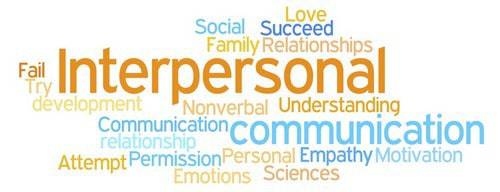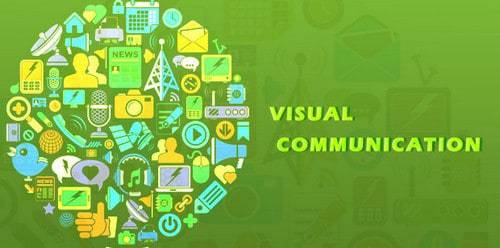Communication is a very basic and fundamental process for human beings. However, when a brand wants to communicate with their customers, then communication takes another form. Similarly, there is communication involved between teams as well. There are various types of communication between people as well as the intercultural communication between teams.
Table of Contents
What is Communication?
Communication is the act of sending information or ideas via speech, visuals, writing or any other such method. The Communication model has a sender who is sending the message and the receiver who is receiving the message. In between, the speech or ideas need to be simple enough to be decoded and understood by the receiver. If the ideas are not presented properly, then decoding is improper and the receiver does not understand spoken message.
Based on the communication types both of senders and receivers involved, we can define Five types of communications. If we take an example of communication between teams, you will see the higher amount of formal communication as compared to informal. On the other hand, when we consider personal communication and communication between the group of personal friends, you will find these types of communication to be more informal in nature.
You can read more on What is Communication.
In essence, below we discuss the various types of communication used between people or between teams.
5 Types of Communication
Let us delve deep into the 5 types of communication observed between the group of people or a formal team.
1) Verbal Communication
Verbal communication can also be called as Oral communication. In very simple terms, any communication that happens through spoken word or orally between people is known as verbal communication. The objective of such communications is to ensure that people understand whatever you want to convey. Because of its very nature, verbal communications is more quick and precise then email communication.
In the era of messaging via Whatsapp or using email, people still prefer personal meetings or phone calls (or face to face skype calls) because they are effective and much more convenient in conveying the message.
Nowadays, Verbal communication is an important aspect and is looked as a key strength in an individual.
A manager or an executive needs to have good verbal communication skills. A manager has to handle a team of people and he needs to be skilled to convince the team of people in acting like he wants them to. Executives meet many customers who are each different in terms of their understanding and talking skills. Thus, Executives to need excellent verbal communication skills.
The higher up an organization you go, the better should be the verbal skills that you have. This is because you need to ensure that your speech is precise and to the point in clear and concise manner that does not leave any scope for any misunderstanding.
An M.D or a C.E.O may be giving a television interview which is being watched by 100’s of stakeholders of the company. Their speech and verbal communication need to be precise so that they don’t mess up or are not misunderstood. Even in tough times, the verbal communication skills of these leaders play a major part in consoling the crowd.
Example of people who were great at the verbal type of communications.
- Nelson Mandela
- Martin Luther King
- John F Kennedy
- Mahatma Gandhi
2) Non-verbal / Interpersonal communication
How do you make people feel when you enter the room? Is your own body language very strong and are you standing straight and erect or are you slouched and tired? Are you clean shaven, looking your immaculate best for a team meeting or are you shabby with shirts that are not ironed? When you shake hands, do you do so strongly or do you just brush your hand against others?
The above were some examples of Non-verbal communications or interpersonal communications. One of the HR requirements for new joiners in an organization is for them to have good interpersonal skills. This basically means that the employees should brush up on their non-verbal or good communication skills.
If you were in a sales meeting and you have not achieved your target, how will you react? Will you be steady and calm or will you panic and stutter? These are important non-verbal skills and your growth might depend on them.
A manager who panics and who is not good at using nonverbal cues and-verbal communication will generally not be a favorite with his team members. This is because his team members do not look up to him. A manager who stutters, who is not well dressed, who has the wrong body language or someone who is not a strong personality, will not gather a huge following behind him.
However, people with good personalities go a long way in motivating the employees below them. If an employee is demotivated, just keeping an eye contact, a hand on their shoulder and saying a few motivating words is enough for the employee. Taunting them or making facial expressions when talking to them, ignoring them completely or imitating them will demotivate the employee even further. Thus, non-verbal skills play a major role in office culture.
As employees grow into managers and as managers grow into leaders, they become better and better at a more nonverbal communication style and and-verbal type of communications. They know that their own calm headed behavior at times of panic is what will keep the team in check. Similarly, they don’t let their teams get complacent when the going is good.
Example of the Non-verbal type of communications
In Customer service, non-verbal and interpersonal skills play a huge role. Imagine you were unhappy with a product and you went to the customer service department. Instead of understanding your problem, the customer service executive gives a rude reply. Repeatedly you visit them and even though the problem is not resolved, you don’t get a satisfactory answer.
Compare that with a customer service department which smiles when you come in. They reassure you that they are on top of your problem. They are proactive and update you themselves on when to expect the problem to be resolved. Later on, they follow up whether you were satisfied with the response and if there was anything they could do further.
This smile, the positive body language full of reassurance, the listening ability are all non-verbal type of communications. A good customer service executive will pay special attention to them and will ensure that you leave satisfied! Hiring good customer service executives, who have great interpersonal skills, is the sign of a good organization which is focused on customer satisfaction.
3) Written Communications
There are many many ways that written communications can be used. The number of ways is ever increasing with digital age and the penetration of smartphones and the internet. One of the most common forms of written communications used till date is Email. But slowly, written type of communications is becoming more informal with Whatsapp and other online messaging apps being used regularly.
All different forms of written or oral communication can be formal or informal. If today, we visit a court of law, you will find that even Whatsapp messages are considered to be legal in nature. In fact, there have been so many cases of celebrities brought under the scanner because of wrong written communications on their social media account.
Thus, the above example is further proof that written workplace communication needs to be used safely and effectively. In fact, written communication between friends can be informal but this type of communication between working professionals should always be formal so that any misquoted words are not misused with ill intent.
The advantage of written communication is that it acts as the final word once a decision has been taken. When you quote your prices to the customer, when you rank a dealer on top, when you promote an employee or when you launch a new product, you use written communication to communicate the update to your team and your employees.
A problem with written down communication styles is that it becomes too formal and might incite ego or various political problems when written communication is used. Newspapers are perfect examples of written words which create controversy.
There is a very apt quotation “Words are mightier than swords”. A wrong email delivered in the wrong hands can cause the world to turn upside down. The many emails and documents released by Edward Snowden which brought the US government under the scanner, are perfect examples of how to use written documents safely and privately otherwise they can bring a whole organization tumbling down (whether justified or not is a different discussion)
4) Formal & Informal
There are two types of communication when considering the formality of the communication. One is the formal and official type of written communication skills which can be emails, letterheads, memos, reports and other such kinds of written material. These are considered as documentary evidence and certain formality is associated with them. You cannot submit such formal documents and later deny them.
Informal communication is one where there is nothing official about the communication that is happening. It can be known as Grapevine communication. There is no specific channel of informal communication because there is Social media, Whatsapp, SMS which are all vehicles of informal communication which can be used by people.
Advantages of formal communication
- When you want to finalize policy and want to decide a course to adopt, then formal communication is more effective
- Formal communication can help in establishing procedures and ensuring that the steps are followed.
- Any promises or any official plans need to be formally documented so that they can be referred to later.
Advantages of informal communication
- Informal communication helps the “Open door policy” and makes people more confident and forthcoming with their ideas and creativity.
- Informal communication does not incite fear into peoples mind
- Informal talks encourage people to share their problems.
The problem with formal communication is that it is not personal and a distance is maintained if you use only formal communications. Whereas on the other hand, informal conversations can get out of hand and there can be negative grapevine generated.
5) Visual Communication
One of the industries which most prominently uses Visual communication is the medical industry. New medicines which come into the market have to be shown to doctors and the advantages have to be explained. At such times, the medical representatives carry informative pamphlets which are shown to the doctors and dropped with the doctors.
These informative pamphlets have all the information about the medicine so that doctors can feel confident in suggesting the medicine to their patients. Similarly, many different industries are using visual and communication methods to help interaction with their customers so that they can communicate their ideas better. Explainer videos as a concept is rising and is becoming as one of the best types of communication observed on websites.
There are many elements in visual communication that can be used by marketers or companies.
- Colors (such as brand colors)
- Design (logo and brand design)
- Advertising
- Animations
- Illustrations
- Typography
- Presentations
- Video resume’s
In person-to-person communication too visual communication plays a role. Consider the diagrams made by teachers on blackboards when explaining a concept to a class of students. Or we can also take the example of graphs made in powerpoints by managers when doing a powerpoint presentation to a team of executives or seniors.
Here is a video by Marketing91 on Five Types of Communication.
Tips to Improve your Communication Skills
It’s never easy to communicate with your boss, especially when you’re trying to get a new project off the ground. But there are ways that you can make it easier on both of you. Here are some tips for improving your communication in the workplace:
-
Don’t be afraid to ask questions. If you’re having trouble understanding something, or if there’s something that needs clarification, don’t hesitate to say so! Your boss will appreciate your honesty and openness, and it may even help them explain things better.
-
Be clear about what you need from them. If you have a problem or question about something, explain it clearly before asking for help.
-
If you’re having trouble with a coworker or client, don’t bring it up during work hours unless absolutely necessary—it’s best not to risk making things worse by bringing up sensitive topics in front of others who might not understand what’s going on.
If you’re having trouble with a coworker or client, don’t bring it up during work hours unless absolutely necessary—it’s best not to risk making things worse by bringing up sensitive topics in front of others who might not understand what’s going on.
To summarize, the type of communication most common are…
In teams
- Formal Communication
- Verbal Communication and Non-verbal communication
- Written communication
- Visual communication
In group of people
- Informal Communication
- Verbal and Non-verbal communication
- Informal written communications
Above were all the different types of communications used by a group of people or between the team.
Thank you for reading our article about business verbal communication lesson
Liked this post? Check out the complete series on Communication





So impressed
i know
Samma
Good work done , fantantic
Good job fantastic
Vary usefull
Nice
useful for the real life
beautiful information, may I use this article for my project was looking for your contact so that I can give details of purpose reuse. Thank you in advance
Wow u are such a magician
Very nice
Two types communication Verbal and Non Verbal communication
VERBAL is when giving information is either formal or informal, you can communicate vertical or parallel structure using one on one
Non VERBAL
Sound something that you can hear
color tells you like traffic light is giving information
smell tell you something is wrong like ado
writings you can write a letter to inform something
signs its can tells you what to do
view touch and interactions something that can make you to act
Usefull
Very impressed theory
can I download this information really it is useful
Very fantastic word
Fary fan tastic word
Good job very useful
Indeed, I have got enough stuffs or data for my dessertation research.Thank you for providing the audience with these relivant materials.
Very good summary and interesting may God award u aboundantly .my name is NAMBAFU ASIATI a student at islamic university in uganda, pursuing my diplom in records management and iam in my year one doing communication skills as a course unit . I thk u i have gained much experience from your summary.
Waaaooooh its good!!! i have got some contents for my Students.MY name Is Adam Raphael From Them Mwalimu Nyerere Memorial Academy in TANZANIA
But u know what are doing that’s is very good my friend
My brother, this is actually fantastic piece and may l be permitted to use the same for my forthcoming Business Communications examination? May God richly bless you you for this.
I have nothing much to say, all have already highlighted by others. What i just want to air out is that i have gained some skills. God bless you so much.
It is really nice,may i use it for my forth coming exams.be blessed.
Thanks sir I have gotten all I need
Wowwwww this is wonderful very easy to capture, am a student and have gotten some points
Very helpful theory….
Very helpful hope these will help me answer some of exam questions…May our Heavenly Father bless you…
thankx much for understanding
nice tnx
Good
IT Very nice tnk
Am asking for more information about non verbal communication
My name is patrick mwanza from Zambia, iam in the first year at the university called LEVY MWANAWASA MEDICAL UNIVERSITY, the above notes helped to answer an assignment that we have been given,
We thanks so much for assistance, well summarised note, my God bless you ????????
Not much satisfied with these points
Hi, it is really helpful to me. My name is Tom Yambe, am from Papua New Guinea. I am a final year student at Divine Word University in Papua New Guinea. Your information helps me a lot in my project in communication management one of my courses.
It will also help me in the time of the exam under the course study.
Thank you.
Thanks for help me and many friends.
it is very nice paragraph
Hi,my name is Shulammite osinanna, from Nigeria. Am a student of Ignatius Ajuru University of Education. This is nice and I have gained some point for my exams coming soon.
Thanks………
Nice 1,good job
Good notice I hope every thing wanna go ok in my exams.. thanks much
Good job
I have callect more information from this site
thanks
That is a good question communication
why there are ? in the last?
Am Kabutu Mwendabai, am just doing my college, course of general medicine and started this year. I failed to understand the explanation and notes we were given by our hecturer but as now at least got something from these notes . I really appreciate from you and may God bless you and your families.
What type of communication would a poster be classified as?